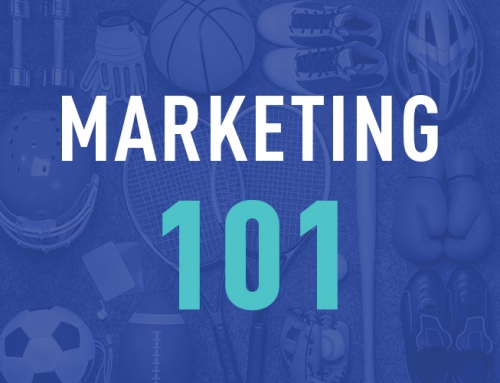Content coming from your youth sports league is always an advantage. It gives your organization a relevant online presence; plus, fresher online content helps your SEO ranking.
If you’re looking for some SEO best practices, check out this post!
However, it’s important to think about the type of content you’re posting too. We’ve all seen it: irrelevant posts on a league’s Facebook page, flooding with parents’ or coaches questions. This is a major no-no on social media.
First before undergoing a full-on social media dive, it’s important for your league’s Administrator to evaluate the time and resources available to your team of volunteers. If the time is there to use each social media platform, that’s great. If not, that isn’t an issue. The most important tip to remember in whatever social media your league chooses to do, do it well.
Just because your organization uses Facebook, Twitter, and other channels, does not mean the same content needs to be blasted out. Not all content is uniform for every channel. Think about it in this regard, if you choose to use more than one social media channel, you’re in control of where your customers and prospective customers go to read the latest types of updates or stay engaged with your league online.
According to entrepreneur.com’s article, this is generally what should be posted on each platform:
- Facebook: Videos and curated content
- Instagram: High-res photos, quotes, Stories
- Twitter: News, blog posts, and GIFs
These are general digital marketing standards for businesses using social media. The same rule of thumb may be applied to youth sports leagues, but the content will be specific to your league or sports offered at your organization.
Here’s a breakdown of how each platform can be used for youth sports leagues:
Facebook
Facebook has an easy setup for new business users. It equips small businesses to open a company page and, if you choose, the ability to start utilizing targeted Facebook ads. Plus, you can connect your Instagram account to your company’s Facebook page and build ads from there.
A main advantage of Facebook is that it’s the most widely used social media channel, so most of your players and parents will already be a user. Facebook also provides a platform to easily interact with potential customers in an engaging way as well as effectively communicating updates and events to current customers. Unlike your personal Facebook account, posts need to be curated and relevant to your audience. At minimum, posts should relate to your organization, such as game updates, events, registration days, or events similar to these.
Overall, Facebook makes for a great tool since it is easy to manage, is widely used, and can accommodate many types of content. It can be used to post pictures, videos, or regular posts, whether they’re about one of the teams that won a championship or a relevant article about sports safety.
As for type of content, bufferapp.com recommends the following:
- Support – This could be posts advertising Registration Listings, schedule posts, or other parent/coach related content
- Videos – Clips of high-profile games for your area or other team videos
- Photos – This could be team photos,
- Relevant content – This could be informational posts or awareness posts, such as holiday Fan Wear order
Instagram is a very visually focused social media platform. Its content is comprised of photos, live streams, and videos. It’s a great resource if your organization has lots of media content and volunteers to manage it. Generally, it is not ideal for updating your players and parents, but it is an interactive way to keep your members engaged. So, to make your account valuable, it requires a high volume of pictures and videos, and, more importantly, someone to edit that content. When it comes to using Instagram, there is a definite need to use high-quality photos and content.
For most youth sports organizations, this is definitely a nice-to-have; not required. Don’t forget to use relevant, trending hashtags and tagging your pictures’ locations.
As for type of content, bufferapp.com recommends the following:
- Product Photos – Pictures of Fan Wear or Uniforms & Equipment your league is selling
- Behind-the-scenes – Players getting pumped up for their game, like a pep talk with the coach
- User generated content – Interviews with players or parents
Twitter
Twitter is high traffic and allows for an opportunity to be highly engaging, since everything is real-time. Twitter is best used for real-time engagement, such as sharing events like high profile games or last minute updates. A user’s feed can be easily flooded, making it more time-consuming to stay relevant, so keep in mind it’s easier for a company’s Twitter page to look stagnant.
If you have a volunteer(s) willing to be on standby to post updates, give shout outs, and repost from other users, it could be worth it! If your volunteers have the bandwidth to stay on top of it, Twitter can be a useful channel to keep members updated! If you choose to use it, don’t forget this vital part of tweeting: hashtags!
As for type of content, bufferapp.com recommends:
- Quick updates – Scheduling updates or rainouts
- Game updates – If there is a championship game your league wants to advertise
- Relevant content – Leagues involving equipment may want to share helpful posts for their parents. For example, blog posts about finding the right bat!


